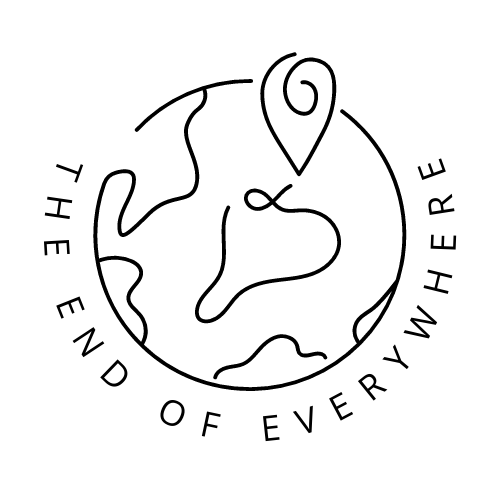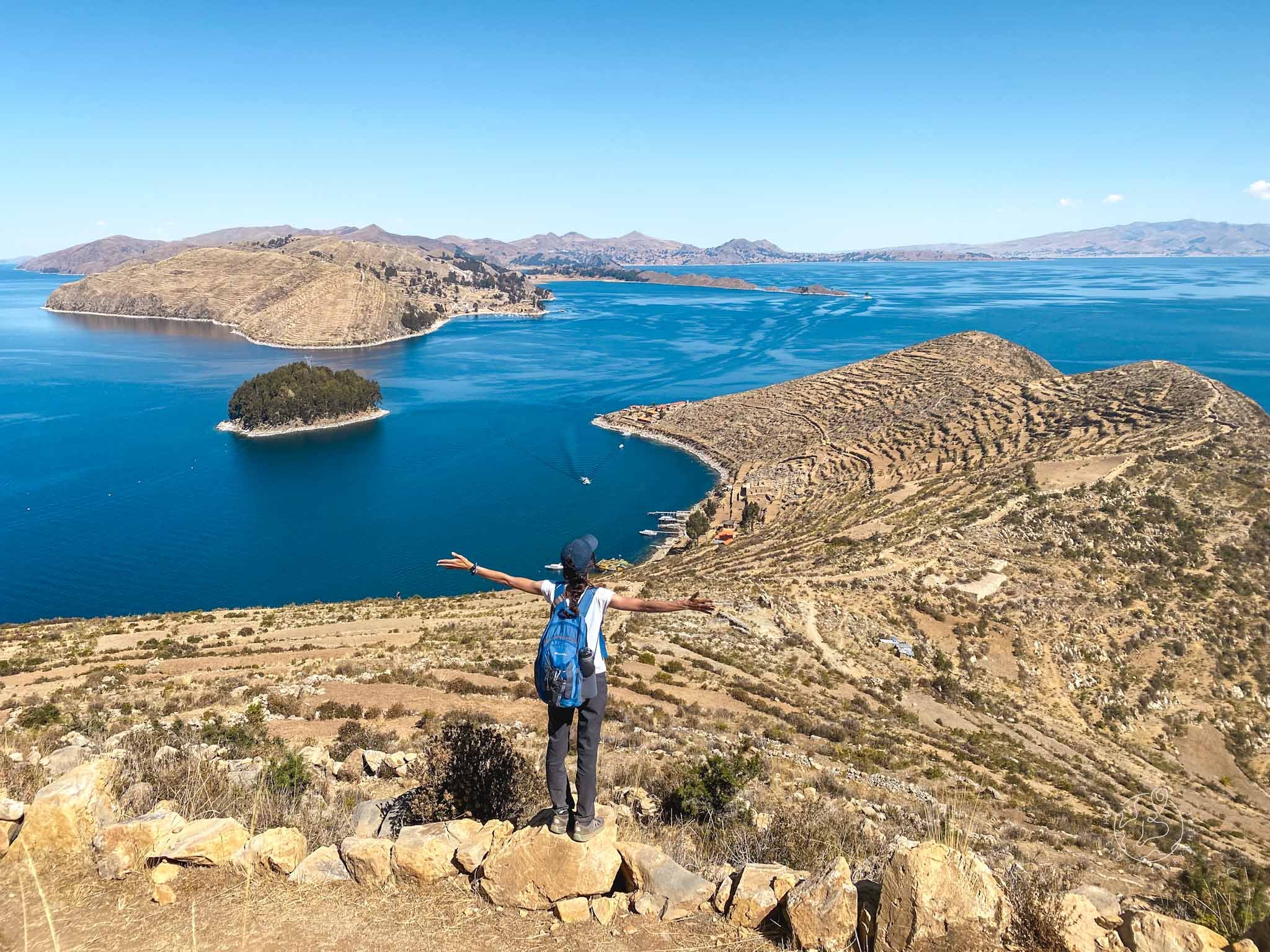Cusco: Ancient City, Modern Flavours
We’ve signed up for a lot of bus journeys over the 12 months we will be travelling, but the prospect of a 24 hour bus through winding mountain roads, gaining 3400m in altitude along the way, was too much for my stomach to take.
So our journey from Lima to Cusco became one of only 2 flights we have planned. It was such a luxury to have a journey done in an hour! It was an early start but by lunch time we were settled into our hostel in Cusco, ready for a couple of days acclimatisation.
Cusco is a city that holds the rich cultural and historical heritage of the Inca Empire, and we found it to be a captivating place. Between acclimatising, doing the Inca Trail and visiting Rainbow mountain, we spent two weeks in and around the city - the longest we’ve spent anywhere on our trip so far.
We started with a walking tour to get to know the area. At its heart lies the Plaza de Armas, a picturesque square surrounded by colonial-era buildings with distinct Inca foundations. Cusco Cathedral, an example of Spanish Renaissance architecture, dominates the plaza.
Inca Capital
Cusco was the former capital of the Inca Empire, and remnants of this heritage are scattered throughout the city. There are numerous examples of Incan building throughout the city centre, the most famous of which being the 12 angled stone - an incredible example of engineering to create interlocking rocks without use of modern day tools.
Further afield, Incan sites and ruins across the sacred valley make for popular day tours.
Cusco's culture is a fusion of indigenous and Spanish influences, reflected in its festivals. Indeed, in the two weeks we spent in the city we saw three different parades celebrating saints! We also loved seeing the Alpaca Women wondering the streets every day.
The Alpaca Women of Cusco are quite famous and icons of the city. These indigenous women bring their animals to the streets of Cusco, charging a few Soles for tourists to take pictures. And let me tell you, the alpacas are so adorable it is hard to resist!
I am always wary of paying to take pictures of animals because I wouldn't want to contribute to any animal being mistreated. After a little research and asking our walking tour guide about the women, I found out that Alpacas are mostly domesticated in the Andes, and in most cases these little charges are treated like any pet: with love and care.
For these women, who mainly speak Quechua and maybe a little Spanish, there aren't a lot of jobs available in the city. Posing for photos allows them to have their own business where they can make money, and as a visitor it is an insight into the indigenous culture of the region.
After a few words in faltering Spanish with one lovely woman outside San Pedro Market, and seeing how well looked after Rosaria the aplaca was - she even responded to her name! - I asked if I could take a picture of them together, and even had a little cuddle with Rosaria myself. So soft!
San Blas
We spent our second day wandering the streets of the San Blas neighbourhood.
The San Blas neighbourhood is known for its charming and artistic character, and we spent the morning getting lost in its narrow cobblestone streets, colonial architecture, and vibrant arts scene. The area is filled with galleries, workshops, and craft shops, making it a hub for local artisans and craftsmen. We browsed the local stalls and finished at a gorgeous lookout point over the red rooftops of Cusco’s historical centre.
The following 7 days were mainly spent outside of the city in the surrounding, beautiful Andes. First, we tackled The Inca Trail to Machu Picchu. To say this was a dream come true is an understatement! It was the first thing we booked when planning our trip; before we even had a flight out of the U.K. we knew what dates we would be on the trail. It was so special it deserves its own post: read about our Inca Trail experience here.
After a couple of days recovering (believe me, we needed it!) we set off again to visit Rainbow Mountain. I’ll save the details for a dedicated post, but we decided not to visit the popular Vinicunca mountain that you’ll see in all the Rainbow Mountain pictures, and instead went to the lesser known Palcoyo Mountain… it was one of the best decisions we’ve made. Read about our Palcoyo Mountain experience here.
A Taste of Cusco
After all that it’s safe to say our legs were aching, and we were in need of a less physically demanding end to our second week. So, still salivating from our culinary adventures in Lima, we decided to delve deeper into Peruvian cuisine and booked ourselves a cooking class with chef Jesus from Peruvian Cusco Flavors.
Peruvian cuisine has been one of our favourite discoveries on this trip so far. It has a rich history and is shaped by indigenous, Spanish, African, and Asian cultures. This multicultural blend has resulted in a wide variety of dishes, each with its own flavours. Add to this Peru's biodiversity, which contributes to unique ingredients like quinoa and over 3,000(!) native potato varieties, as well as ingredients and influences from landscapes ranging from the coast to the high mountains and the depths of the jungle. It’s no wonder it has a reputation as one of the world's most exciting and flavourful culinary experiences!
Our tour with chef Jesus was nothing short of sensational. We were in foodie heaven!
We started with a tour of San Pedro Market, where the chef bought the ingredients for our class as well as giving us a taste of local produce. We tried a passion fruit like we’ve never seen before! Bread, cheese and chocolate tastings were also snaffled as we wandered through the stalls.
We then walked across town to his beautiful cooking studio, where we greeted with a glass of Chicha Morada - a refreshing corn drink - and began making our feast.
First up, we made the classic Peruvian cocktail, Pisco Sour, and prepared quinoa and cheese Tamales ready to be cooked.
With our Tamales in the oven we started on another traditional Peruvian dish: Causa Limeña. This potato and chicken dish was created for soldiers during the war between Peru and Chile, hence the meaning of its name, “for the cause” / “for Lima.”
After all that work, it’s only right we tucked into the dish straight away… and it was delicious! We then mixed up an Espresso Martini with a twist - using Pisco instead of Vodka - ready for our hot Tamales to be plated and devoured.
Our final drink was a Pisco punch - a tropical, pina colada like drink using chicha morada as a base. And then we prepared perhaps the most iconic Peruvian dish: ceviche. Being in the mountains, our ceviche was made with fresh lake trout, and given an Asian twist with the addition of soy sauce, oyster sauce and sesame oil. It was truly incredible. The marinade for the fish was just the sort of food we love… we could have licked the bowl clean!
Our dessert was a Peruvian classic, picarones. These little doughnut like pastries were doused in a spiced syrup that tasted like Christmas.
Honestly, this class was one of the highlights of our time in Peru - as much as we have loved all the outdoor activities and hiking, it was nice to experience a less physically demanding activity. And bonus: chef Jesus emailed us all the recipes, so friends and family can definitely expect a Peruvian dinner party when we return! We left the class feeling very full, happy and a little bit tipsy… it was the perfect end to our time in the city.
Even after spending so long in Cusco, we were sad to leave. One of the hardest parts of travelling for so long is never having that feeling of being settled. But it’s safe to say we found a little bit of home in Cusco’s cobblestone streets.
Related Content




























